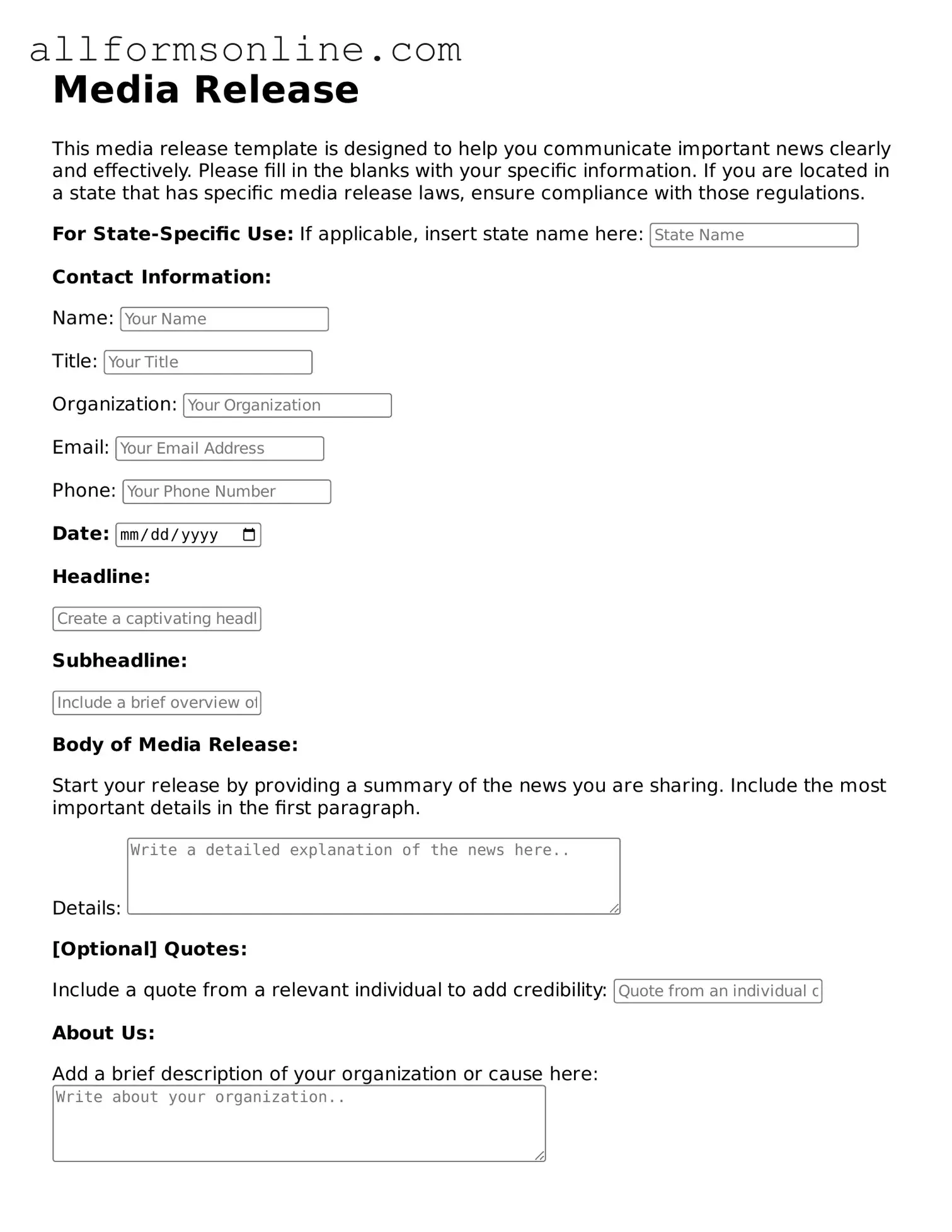What is a Media Release form?
A Media Release form is a legal document that grants permission for an individual or organization to use a person's image, voice, or other likeness in various media formats. This includes photographs, videos, and audio recordings. By signing this form, you allow the specified parties to use your likeness for promotional, educational, or informational purposes.
Why should I sign a Media Release form?
Signing a Media Release form protects both you and the organization using your likeness. It ensures that you understand how your image or voice will be used and that you consent to it. This clarity helps prevent misunderstandings and potential legal issues down the line.
Do I have to sign the Media Release form?
No, signing the Media Release form is completely voluntary. If you choose not to sign, the organization cannot use your likeness. However, keep in mind that not signing may limit your participation in certain events or projects where your image or voice is needed.
Can I revoke my consent after signing the Media Release form?
What happens to my information after I sign the form?
Your personal information will be handled according to the organization’s privacy policy. Typically, it should only be used for the purposes outlined in the Media Release. If you have specific concerns about how your information will be used, ask the organization for clarification before signing.
Is there any compensation for signing the Media Release form?
Compensation for signing a Media Release form varies by organization and project. Some may offer payment or other benefits, while others may not. Always inquire about compensation if it is important to you before signing the form.
What should I do if I have questions about the Media Release form?
If you have questions or concerns about the Media Release form, reach out to the organization requesting your signature. They should provide clear answers and address any uncertainties you may have. It’s important that you feel comfortable with the terms before you sign.
